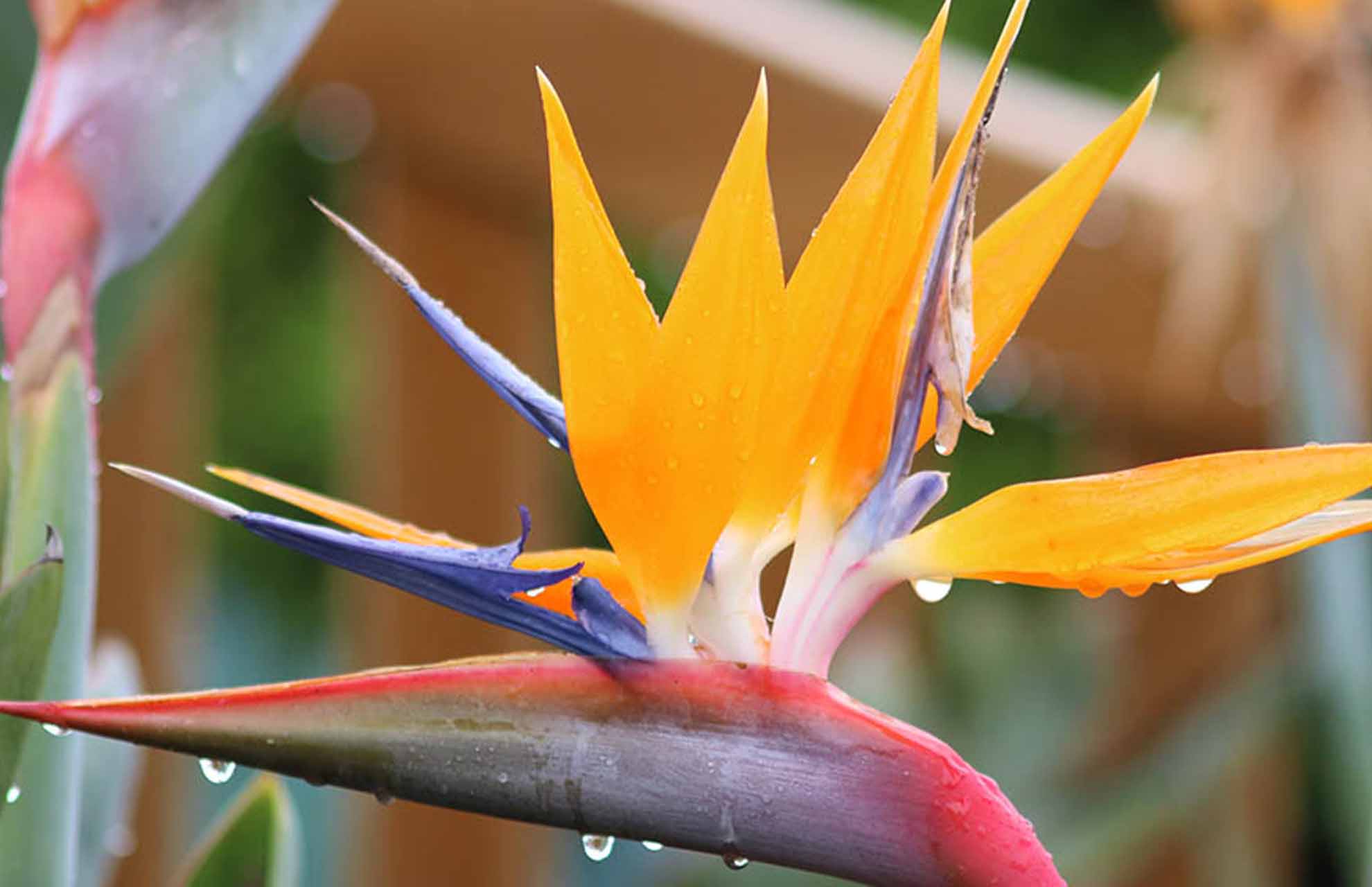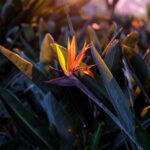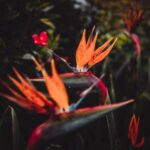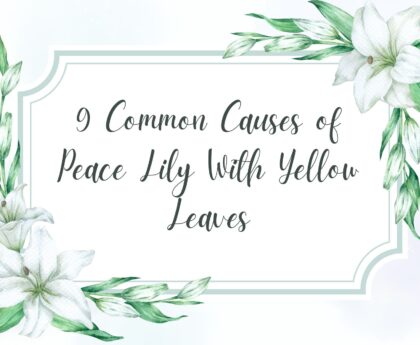Large, relatively simple-to-grow plants called birds of paradise to give any indoor setting a boldly tropical feel. A bird of paradise can grow to over six feet tall with proper care, even inside. The plant will put on a colorful flower display under ideal lighting conditions, bringing a touch of the tropics into your home. Here, we talk about how to take care of your bird of paradise in a room.
Preparation
There are five species of bird of paradise, in the Strelizia genus, and not all of them are suitable for growing indoors.
Larger species like S. Nicolai or S. alba grow up to 30 feet tall, which makes them difficult to grow in your home unless you live in a mansion with an enormous, well-lit foyer.
Since most of us don’t have this luxury, make sure you choose the common bird of paradise, S. reginae, which only grows up to six feet tall.
Repotting is the first step you must take if you buy a plant from the store that is already in a nursery planter.
If your plant is smaller, look for a container that is at least 12 inches wide by 12 inches deep. Choose a container that is at least 34 inches deep and wide if the plant is larger.
Since you’re growing it indoors, you’ll need to make sure the container has drainage holes in the bottom and a draining dish to prevent water from leaking out and ruining your floors.
To repot, place your plant in the new planter after filling the old one with two parts potting soil and one part perlite to improve drainage. Carefully remove your plant from the nursery planter.
Keep your bird of paradise from being planted too deeply. Exposure of the tops of the roots may aid in promoting flowering.
After relocating the plant, water it until you notice drainage dripping into the drainage dish, then place it as close to a window that receives the most sunlight as you can.
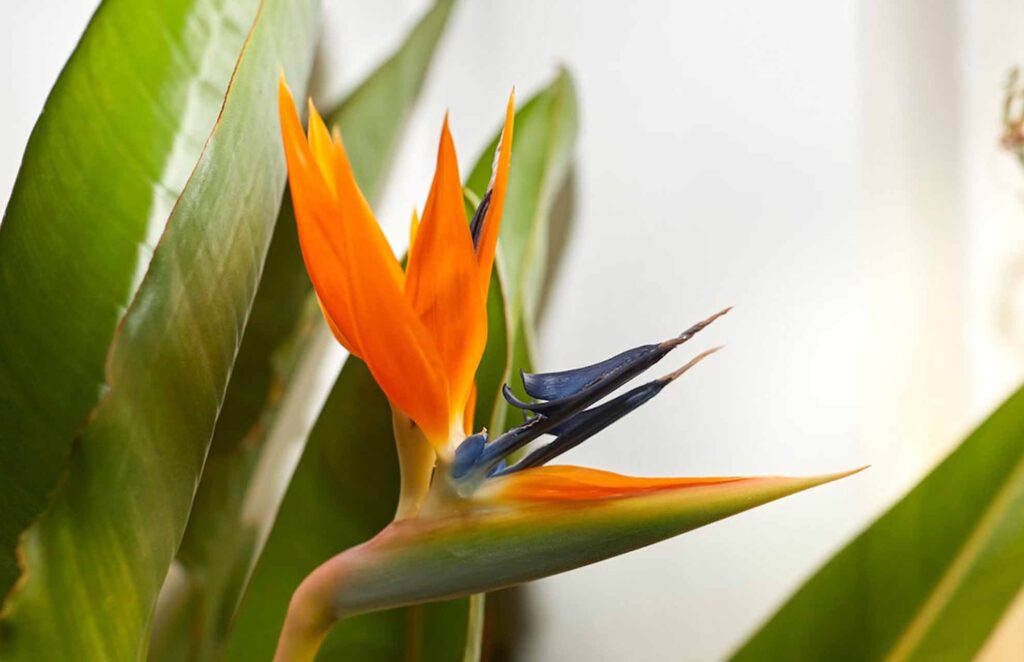
Care For Your Indoor Plant
Light And Soil
It should come as no surprise that birds of paradise, which are tropical plants, love strong sunlight. Put your indoor bird of paradise where it will receive the most light.
The only exception to this rule is when it’s extremely hot outside, like in a sunroom, in which case bright, indirect light is preferable. Try exposing your plant to more light if you notice yellowing leaves on it.
Rich, well-draining soil with some moisture retention is preferred by birds of paradise.
Water
Regular watering schedules are best for birds of paradise. In the spring and summer, when plants are actively growing, keep the soil moist. However, during the fall and winter, when plants are dormant, let the soil dry out between waterings.
The leaves might burn if the water is particularly salty. When possible, use rainwater or distilled water to water your bird of paradise if this is the case with your water.
The typical household humidity is ideal for birds of paradise, but intermittent misting during the drier winter months may be beneficial.
Fertilization
Feed your bird of paradise in the spring and summer with an all-purpose liquid fertilizer that has been diluted to half the recommended strength. In the fall and winter, avoid fertilizing your bird of paradise because doing so can also result in leaf tip burn from too much plant food.
Insects And Pests
Scale, mealy bugs, and spider mites can all harm birds of paradise, but fortunately, these pests are simple to identify and treat. The leaves should only be cleaned with a soft cloth or some warm, soapy water. The finish on the leaves can be damaged by alcohol and pesticides, so stay away from both.
How To Propagate Your Bird Of Paradise
It is simple to divide a lush, leafy bird of paradise plant. In order to create new plants in addition to the mother plant using this technique, individual tubers or rhizomes of an established plant with attached stems and leaves are pulled or divided.
Before dividing your plant, give it at least three years of age. Remember that division will cause bird of paradise plants to wait for one to two years before blooming.
You will need commercial potting soil, a clean, sharp blade, a few small containers that are the right size for the divisions you intend to make, and powdered rooting hormone in order to divide your bird of paradise.
- Step 1: Carefully tip the pot of your plant on its side, grasp the stem’s base, and remove the root ball while being careful not to damage the stem.
- Step 2: Carefully separate as many stems as you need to create new plants, making sure that each stem division has at least four rhizomes attached. If the roots won’t separate on their own, cut them apart with your knife.
Remove any rotten or dead leaves or roots. Apply rooting hormone to the mother plant’s and the divisions’ cut surfaces.
- Step 3: Add fresh soil to the planting containers for your new plants. Repot the mother plant with fresh soil, making sure the soil level is the same as before, and plant one new stem in each pot. Do not water.
- Step 4: Once the cuts have healed, which should take a few days, you can water the mother plant and the newly formed divisions. Maintain the new plants, as usual, keeping them in a warm, humid area with bright, indirect light.

